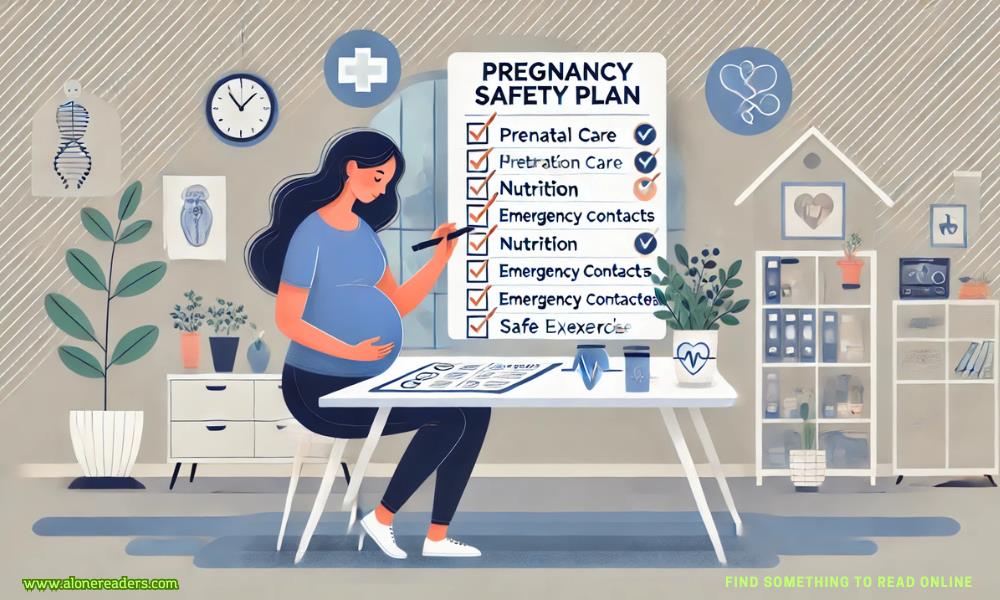
Pregnancy is a beautiful yet challenging journey, one that requires extra care and attention to ensure the safety and health of both mother and baby. One effective way to prepare for the unexpected and manage any potential risks is by creating a Pregnancy Safety Plan. This comprehensive plan serves as a guide, helping pregnant individuals to stay informed, organized, and proactive about their health during pregnancy.
In this article, we will explore the key components of a pregnancy safety plan, ensuring that you are fully prepared for the journey ahead.
A pregnancy safety plan is a roadmap that outlines steps and precautions to take throughout pregnancy to minimize risks and manage potential complications. Having a clear plan in place can help reduce stress, promote healthier decisions, and prepare for both expected and unforeseen circumstances. It covers a range of factors, from medical appointments to lifestyle adjustments, ensuring both the physical and emotional well-being of the mother.
A successful pregnancy safety plan should address several key areas to ensure comprehensive care and preparation. These components are designed to keep the mother and baby as healthy and safe as possible throughout pregnancy. Below are the main aspects you should consider when creating your plan.
1. Prenatal Care and Medical Appointments
The foundation of any pregnancy safety plan begins with consistent prenatal care. Regular visits to your healthcare provider are essential for monitoring both the health of the mother and the baby. During these visits, your doctor will check for early signs of complications, provide necessary tests and screenings, and offer guidance about lifestyle and nutrition during pregnancy.
Key Points to Include:
2. Nutrition and Hydration
What you eat during pregnancy directly impacts the health of both you and your baby. Proper nutrition is vital for the baby’s development and the mother’s well-being. Ensuring you have a balanced diet with plenty of vitamins, minerals, and protein helps prevent complications such as anemia, gestational diabetes, and low birth weight.
Key Points to Include:
3. Physical Activity and Exercise
Maintaining an active lifestyle is important for a healthy pregnancy. However, it’s essential to choose safe exercises that are appropriate for each trimester. Physical activity can help reduce stress, improve circulation, and alleviate pregnancy discomforts such as back pain and swelling.
Key Points to Include:
4. Managing Pre-Existing Health Conditions
If you have any pre-existing health conditions, it’s crucial to manage them carefully throughout pregnancy. Conditions such as diabetes, hypertension, and thyroid disorders may require adjustments to your medication or treatment plan. It’s important to work closely with your healthcare provider to ensure these conditions are controlled, as they can affect pregnancy outcomes.
Key Points to Include:
5. Preparing for Labor and Delivery
Preparing for labor and delivery is a critical component of your pregnancy safety plan. Knowing your birth preferences, creating a birth plan, and discussing pain management options with your healthcare provider will help you feel more confident when the time comes.
Key Points to Include:
6. Emergency Preparedness
Emergencies can happen at any time, so it’s essential to have an emergency plan in place. This includes knowing when to call your healthcare provider or go to the hospital and having a list of emergency contacts. In addition, keep a checklist of necessary items ready for your trip to the hospital, such as your ID, insurance details, and anything specific for labor.
Key Points to Include:
7. Mental Health and Emotional Well-Being
Pregnancy can be an emotional rollercoaster, and it’s crucial to focus on mental health as part of your safety plan. Anxiety, depression, and mood swings are common, and seeking support when needed can make a significant difference.
Key Points to Include:
8. Avoiding Harmful Substances
During pregnancy, it’s vital to avoid substances that can harm both you and the baby. Smoking, alcohol, and illicit drugs can lead to complications such as preterm birth, low birth weight, and developmental issues. Additionally, certain over-the-counter medications can pose risks.
Key Points to Include:
9. Support and Resources
Having a strong support network is essential throughout pregnancy. Whether it’s your partner, family, friends, or a support group, surrounding yourself with people who understand and encourage your journey can be invaluable. Additionally, familiarize yourself with local resources such as pregnancy support organizations, lactation consultants, or parenting classes.
Key Points to Include:
Conclusion
Creating a Pregnancy Safety Plan is a proactive step in ensuring a healthy, safe, and informed pregnancy. By addressing areas such as prenatal care, nutrition, physical activity, and emergency preparedness, you can navigate your pregnancy journey with confidence. Keep in mind that every pregnancy is unique, so work closely with your healthcare provider to customize your plan based on your specific needs.
By taking the time to plan ahead, you’re giving yourself and your baby the best possible chance for a smooth and positive experience. Whether you’re a first-time mother or have previous pregnancies under your belt, having a clear, well-thought-out plan can help you feel more secure in every step of the process.